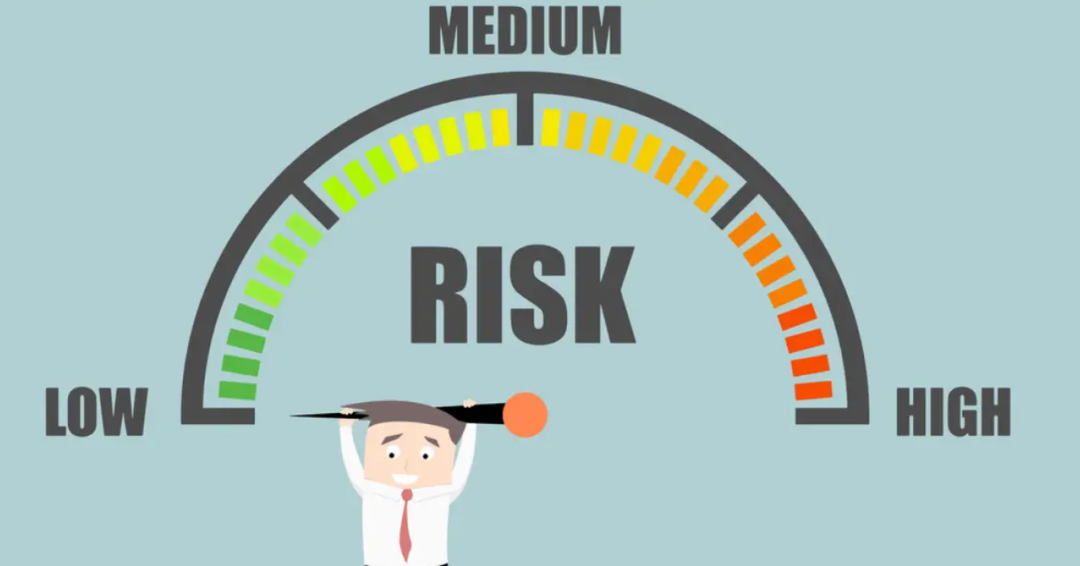Embarking on the journey of business ownership brings a spectrum of challenges and risks. My personal journey through the ebbs and flows of entrepreneurship, especially facing the brink of bankruptcy, has equipped me with deep insights into risk management. This article aims to illuminate the various risk areas that every business owner must navigate, drawing from my experiences and lessons learned.
The Inevitability of Risk in Business
First of all, what is risk? Risk, by definition, means exposure to danger and the possibility that something unpleasant could happen. There are many risks in business, an example of it is the possibility of financial loss.
Throughout history, businesses have faced a multitude of risks that have threatened their existence and success. These risks can stem from a variety of factors, both internal and external, and can have a significant impact on a company’s financial performance, reputation, and overall well-being.
Examples of Historical Business Risks

The annals of business are replete with examples of companies that have fallen victim to unforeseen risks. Some of the most notable examples include:
The Great Depression (1929-1939): This catastrophic economic downturn brought about widespread unemployment, business failures, and financial ruin. Many companies were unable to weather the storm and were forced to close their doors.
The Oil Crisis (1973): The sudden quadrupling of oil prices by OPEC (Organization of the Petroleum Exporting Countries) sent shockwaves through the global economy. Businesses that relied heavily on oil were particularly hard hit, as their costs soared and their profits plummeted.
The Global Financial Crisis (2008): This severe financial crisis, triggered by the subprime mortgage meltdown, led to the collapse of major financial institutions, widespread market turmoil, and a global economic recession.
The COVID-19 pandemic (2020-present): The unprecedented outbreak of the COVID-19 pandemic has posed unprecedented challenges to businesses worldwide. Forced lockdowns, supply chain disruptions, and changing consumer behaviors have tested the resilience and adaptability of companies across all industries.
These historical crises highlight the unpredictable nature of external risks in business. In contrast, debt represents an internal risk, chosen and managed by companies, underscoring the importance of careful financial planning and risk management.
I talk more about risk in my podcast, Risk Management in Business: How to Identify It.
Why Debt is Both a Risk and a Benefit
Debt plays a crucial role in financing business operations, enabling companies to acquire assets, expand their reach, and fund growth initiatives. However, it also introduces a significant risk factor, as it obligates the company to repay the borrowed funds with interest. This financial burden can strain a company’s resources, limit its flexibility, and even threaten its solvency.
Underestimating the Risk of Debt
Many entrepreneurs, particularly in the early stages of their business, underestimate the potential risks associated with debt. They are often driven by the immediate need for capital to fuel growth and may overlook the long-term implications of debt financing.
This underestimation can lead to several pitfalls, including:
- Excessive Debt Burden: Taking on too much debt can quickly strain a company’s resources, making it difficult to meet repayment obligations and limiting its ability to invest in growth opportunities.
- Restricted Flexibility: Debt covenants and restrictions can limit a company’s strategic flexibility, preventing it from adapting to changing market conditions or pursuing new opportunities.
- Financial Distress: In the event of an economic downturn or unforeseen business challenges, a high debt burden can quickly lead to financial distress, potentially resulting in insolvency or bankruptcy.
How to Manage Debt Effectively?

Effectively managing debt is not just about maintaining repayments; it’s also about understanding how debt can impact the overall strategic direction of the business. Key considerations for effective debt management include:
- Debt Capacity Analysis: Carefully assessing the company’s ability to bear the financial burden of debt, considering factors such as cash flow projections, profitability, and asset coverage.
- Debt Structure Optimization: Choosing the most suitable debt structure, including the type of debt (e.g., term loans, revolving credit, bonds), maturity terms, and interest rates.
- Debt Covenant Compliance: Thoroughly understanding and complying with debt covenants to avoid potential penalties or restrictions.
- Regular Debt Monitoring: Continuously monitoring debt levels and performance indicators to identify early warning signs of potential risks.
- Contingency Planning: Developing contingency plans to address potential debt-related challenges, such as economic downturns or industry disruptions.
Legal Risks in Business

Legal risks can pose a significant threat to businesses of all sizes. These risks can arise from a variety of sources, including contracts, intellectual property, employment law, and regulatory compliance. The potential consequences of legal issues can be severe, including financial losses, reputational damage, and even business closure.
Common Legal Risks in Business
Some of the most common legal risks faced by businesses include:
- Contract Disputes: Disputes arising from breach of contract, misrepresentation, or other contractual issues can lead to costly litigation or arbitration.
- Intellectual Property Infringement: Unlawful use of trademarks, copyrights, or patents can result in lawsuits, injunctions, and damages.
- Employment Law Violations: Failure to comply with labor laws, wage and hour regulations, or discrimination laws can lead to hefty fines and lawsuits from employees.
- Regulatory Compliance: Non-compliance with industry-specific regulations or environmental laws can result in penalties, enforcement actions, and reputational damage.
The High Cost of Legal Disputes
Legal disputes can be extremely expensive, both in terms of direct legal fees and indirect costs associated with lost productivity, management time, and reputational damage. That’s why over 90% of cases don’t go to court. They only end up in a settlement. In fact, a study by the Stanford Law School found that the average cost of a business lawsuit in the United States is $250,000, with some cases reaching into the millions.
“Understanding the high costs associated with legal disputes underscores the importance of managing both internal and external forces that can influence a company’s risk and success.”
What are the Internal and External Forces in Business
Beyond legal disputes, businesses must navigate a complex landscape of internal and external forces. These forces, varying in nature and scope, play a crucial role in shaping a company’s strategy and its ability to thrive in a competitive market. While internal forces offer a degree of control and adaptability, external forces present challenges that require foresight and strategic planning. Together, they form a dynamic environment in which businesses must operate and succeed.
Internal Forces in Business

Internal forces are those that originate within the business itself and over which the company has some degree of control. These forces can significantly impact the company’s risk profile and overall success.
One of the most critical internal forces is the company’s product or service portfolio. Over-reliance on a single product or service can make the company vulnerable to changes in market demand, technological advancements, or competitive pressures. Diversifying the product or service offering can help spread risk and reduce the impact of any one product or service failing. There’s a saying: don’t put too many eggs in one basket.
In addition to product diversification and customer diversification, other internal strategies for managing risk include:
Operational efficiency: Streamlining processes, reducing costs, and optimizing resource allocation can improve the company’s financial resilience and ability to withstand external shocks.
Financial management: Maintaining a healthy balance sheet, diversifying funding sources, and establishing contingency plans for financial emergencies can help the company weather economic downturns or unexpected expenses.
Talent management: Building a strong team with diverse skills and expertise can enhance the company’s adaptability and ability to respond to changing market conditions or unforeseen challenges.
External Forces in Business

External forces are those that arise outside the company’s control and can significantly impact its operations and performance. These forces can be broadly categorized into:
Market forces: Changes in consumer preferences, technological advancements, or competitive pressures can alter the dynamics of the market and pose challenges for businesses.
Regulatory forces: New laws, regulations, or policy changes can impose additional costs, compliance requirements, or restrictions on business activities.
Economic forces: Economic downturns, recessions, or currency fluctuations can impact consumer demand, supply chains, and overall business profitability.
Natural disasters: Floods, earthquakes, hurricanes, or other natural disasters can disrupt operations, damage property, and cause widespread economic damage.
Global crises: Pandemics, political instability, or geopolitical conflicts can disrupt international trade, travel, and supply chains, creating significant challenges for businesses.
It’s important to consider how these factors intersect with the personal aspirations and values of business owners. Aligning a company’s risk profile with the personal ideals of its leadership is a critical, yet often neglected, aspect of strategic planning and risk management.
How to Align Risk Profile with Personal Ideals
An often overlooked aspect of business risk management is aligning the risk profile of the business with the personal goals and ideals of the owner.

Strategies for Aligning Risk Profiles with Personal Ideals
There are several strategies that entrepreneurs and business owners can employ to align their risk profile with their personal ideals:
Self-Assessment: Begin by conducting a thorough self-assessment of your personal values, risk tolerance, and long-term goals. This will help you identify the types of risks that resonate with your personal beliefs and aspirations.
Risk-Reward Analysis: When evaluating business opportunities, carefully consider the potential rewards and risks associated with each decision. Assess the potential impact of these risks on your personal well-being, financial stability, and ability to achieve your long-term goals.
Diversification Strategies: Diversifying your business by expanding into new markets, offering new products or services, or partnering with other businesses can help spread risk and reduce your exposure to any single market or product failure.
Contingency Planning: Develop contingency plans to address potential risks and challenges. This could include financial planning for downturns, insurance coverage for property damage or business interruption, and strategies for adapting to changing market conditions.
Entrepreneurs and business owners can effectively align their risk profile with personal ideals through self-assessment, risk-reward analysis, diversification strategies, and comprehensive contingency planning, ensuring both business resilience and personal fulfillment.
Conclusion
In summary, understanding and effectively managing different types of risks — be it debt, legal challenges, internal or external forces — is vital for building a resilient business. Moreover, aligning these risks with your personal goals and aspirations is crucial for achieving long-term satisfaction and success in the entrepreneurial journey. If you want to know how I manage these risks to allow me to live the life that I wanted, sign up for our newsletter: https://idealbusiness.invizbiz.com/newsletter

